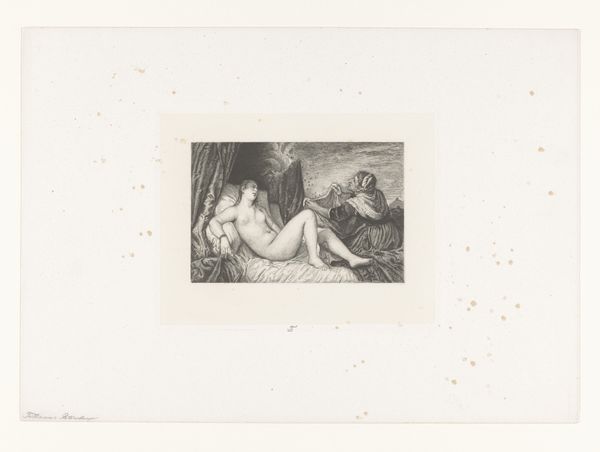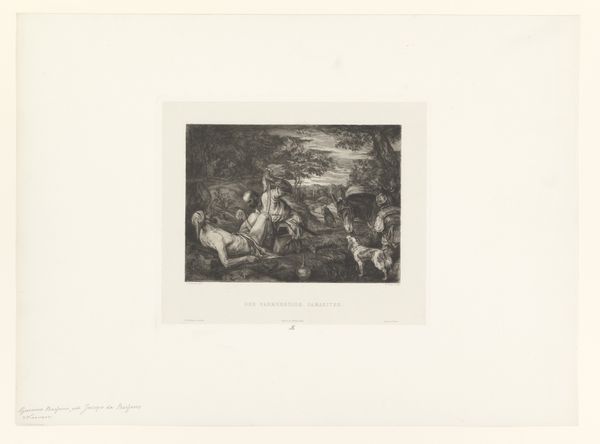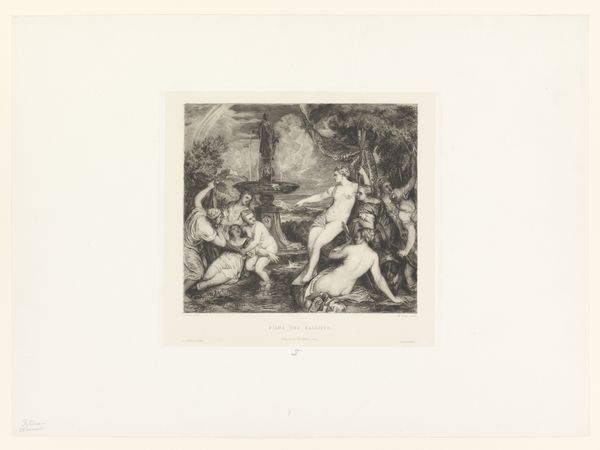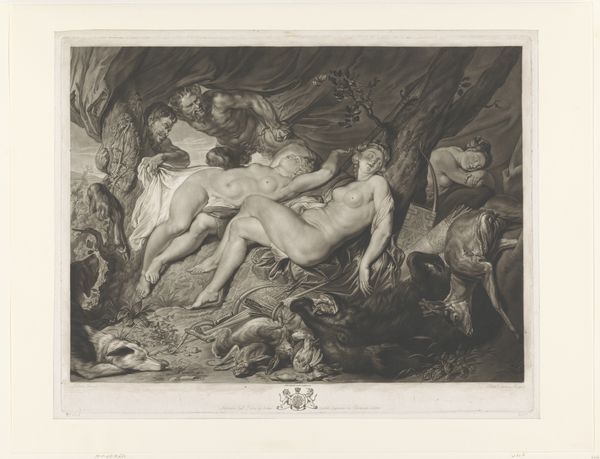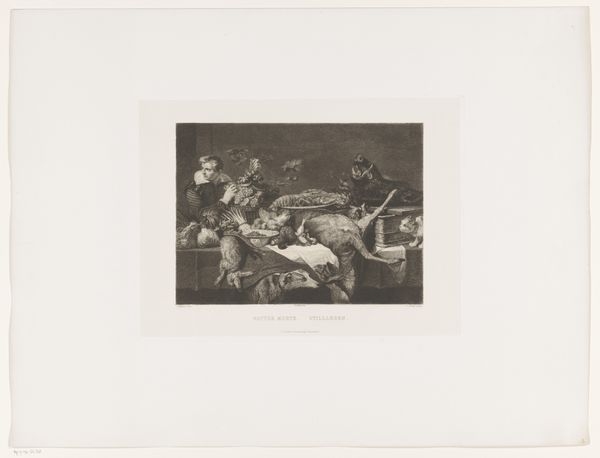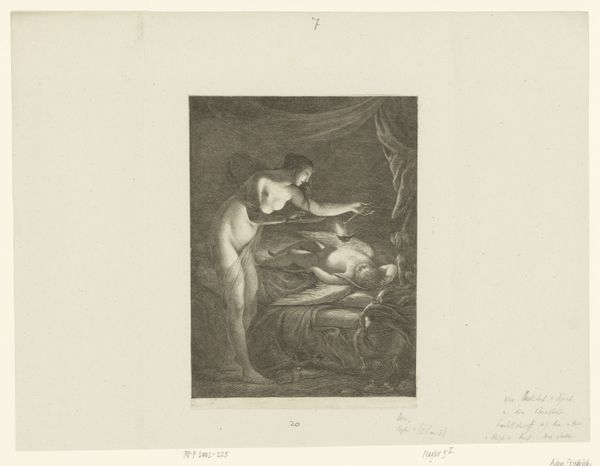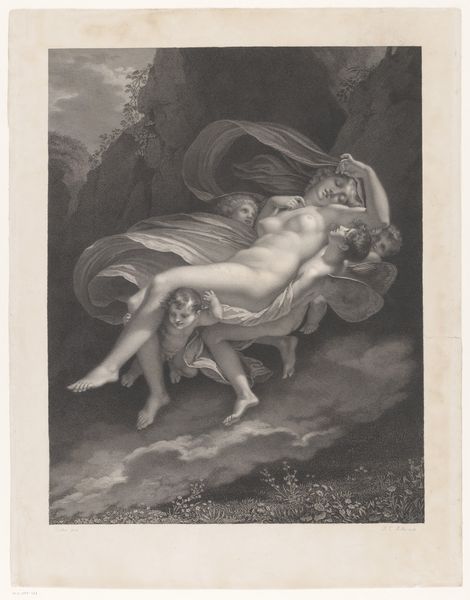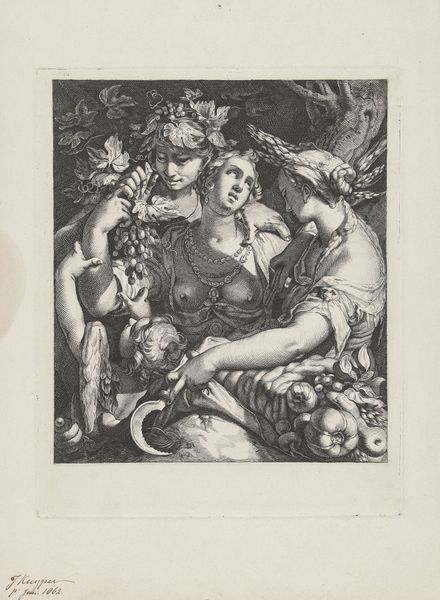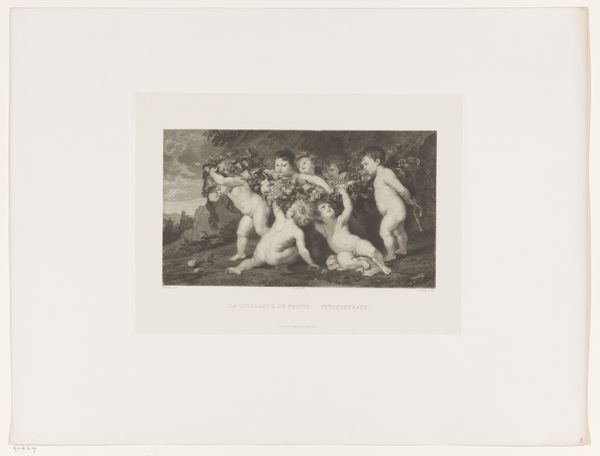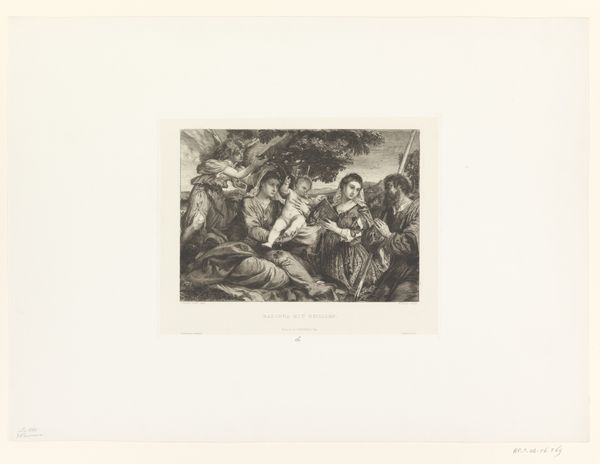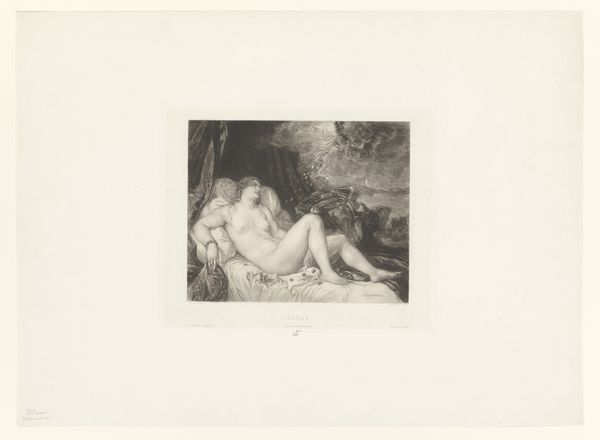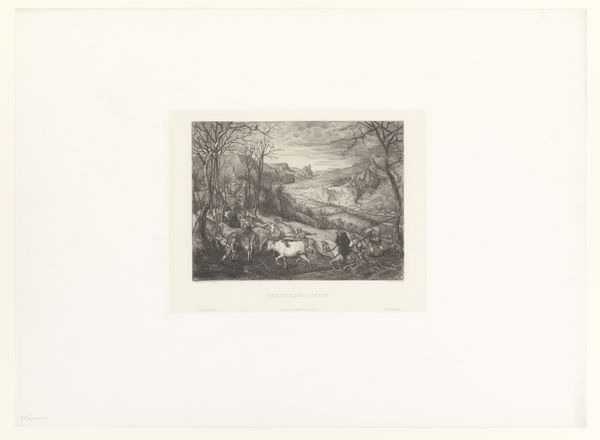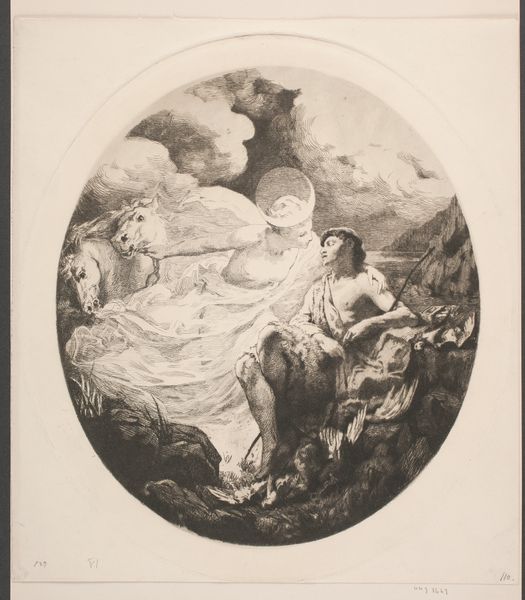
Dimensions: height 570 mm, width 802 mm
Copyright: Rijks Museum: Open Domain
Curator: Before us, we have Jean Joseph Pelissier’s 1896 etching titled "Jupiter en Antiope." Editor: It’s a somber scene rendered in such fine detail. The cross-hatching creates a sense of depth, drawing me into the shadowy woods where this encounter unfolds. Curator: Indeed. The formal structure emphasizes the interplay between light and dark. Note the allegorical presentation of Jupiter and Antiope, framed by an ornate, decorative border. The figures’ placement within an oval further focuses our gaze on their dynamic. Editor: Looking closely, the labor involved in creating this print is really considerable. Think about the meticulous process of etching the design onto the metal plate—the skill needed to translate such nuanced tonality. Also, the composition feels purposefully classical and quite self-aware. I imagine it demanded patience. Curator: Exactly! The linear quality and tonal gradations serve to construct form and atmosphere, all within the very strict academic style of that time. Consider, too, how the allegorical subject is elevated, the nude figure rendered according to idealized proportions and poses, all common hallmarks of that era's aesthetic doctrines. Editor: Thinking about production further, who was consuming these kinds of prints? Was it accessible to a wide audience, or was this destined for a more affluent collector? This is, perhaps, more of a display of artistry and craftsmanship than a populist object. Curator: That’s an insightful consideration. While this artwork may lean toward academic ideals, its enduring fascination lies in its sophisticated synthesis of technique and the enduring relevance of classical narratives. It represents a powerful expression through expertly deployed visual language. Editor: Absolutely, by studying this print, we are witnessing more than technique, but are invited to understand it as material culture: production methods, targeted consumer circles, class status, artistic intent. These things, combined, present endless paths for interpretation and appreciation.
Comments
No comments
Be the first to comment and join the conversation on the ultimate creative platform.
